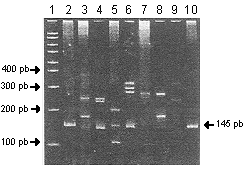















Jump to:
Observations | Tests Conducted | Standard For ALS | Genetic Testing
Since there is no single test to determine ALS, doctors rely on observations, a variety of tests, and in the case of FALS, family history and genetic testing to make a diagnosis. The multiple tests are there to rule out diseases or conditions that can cause ALS-like symptoms. Primary lateral sclerosis, only affecting upper motor neurons; Progressive muscular atrophy, only affecting lower motor neurons; and Progressive bulbar palsy, affecting only bulbar muscles, are among some of the many. When a person meets the standard for ALS, then the diagnosis is made. Diagnosis can take anywhere from weeks to months.
Extensor Plantar Reflex: This is a test done to determine the presence of brain damage. The doctor runs an instrument along the side of the foot, and if the toes spread out while the big toe points up, there is brain damage (a normal person's toes would point down).
Urine testing: Urine is tested for heavy metals since high levels can destroy tissue and cause muscle weakness, twitching, and higher reflexes.
Blood testing: The blood is tested for abnormal thyroid or parathyroid hormone levels since these can cause ALS-like symptoms. A normal result signifies something other than hyperthyroidism.
Muscle biopsy: Tissue from the muscle is removed and examined under a microscope for changes in muscle fiber shapes.
Spinal tap: Spinal fluid is taken and examined. If there are high levels of protein in the fluid, it is not ALS, as ALS patients have normal levels of protein.
Electromyography (EGM): This test uses a needle inserted into the muscle to measure a muscle's electrical impulse, shown on a screen as spikes. The more severe neuron loss is, the more pronounced the spikes.
Nerve Conduction Velocity (NCV): This measures the amount of time an electrical impulse travels down a specific length of nerve. Those with ALS will have normal electrical impulses.
Magnetic resonance imaging (MRI): An MRI uses a powerful magnet and radio waves to show atoms of different types of tissue on a computer screen. When the pictures are displayed, doctors are able to tell from examination whether something else is causing ALS-like symptoms.

Computerized Tomography (CT scan): CTs use x-rays to create images of the brain from many angles, and allow doctors to rule out conditions such as tumors or blood clots.
Positron Emission Tomography (PET scan): PET scans allow doctors to see areas of brain activity after a radioactive dye is injected into the brain. When a person performs a simple function, the areas of the brain that are working light up, and darkened areas show places that are damaged and non-functional. In a person with ALS, brain activity is normal.
Developed by the World Federation of Neurology (WFN) in 1998, El Escorial is the standard for confirming ALS. All conditions on the standard have to be met in order for the diagnosis to be confirmed. The conditions are:
In the case that only two of four areas are affected, the diagnosis is "probable" or "possible", depending on which two area's combination. If only one area is affected, there is insufficient evidence to diagnose ALS.
Genetic testing is only available to determine SOD1 mutations. Those who qualify are people experiencing ALS-like symptoms and have had immediate relatives diagnosed with ALS.
 There are two methods that the genetic test could be done. The first is called Single Strand Conformation Polymorphism, or SSCP. First, a blood sample is taken and sent to a specialized lab where the DNA is extracted and replicated, then run on a gel. When run, the DNA fragments will be seen in a series of bands. This is compared to the control, a normal SOD1 gene, by looking at the location of the bands. If a mutation is present, the bands in the sample DNA will be in a different location than the control.
There are two methods that the genetic test could be done. The first is called Single Strand Conformation Polymorphism, or SSCP. First, a blood sample is taken and sent to a specialized lab where the DNA is extracted and replicated, then run on a gel. When run, the DNA fragments will be seen in a series of bands. This is compared to the control, a normal SOD1 gene, by looking at the location of the bands. If a mutation is present, the bands in the sample DNA will be in a different location than the control.
The second method is called sequencing, where blood is taken, the DNA removed, and through a procedure, the actual "letters" of DNA (ATCG) can be seen. The control and sample can thus be compared, and specific changes are easy to discern. Results for the genetic testing can take up to a couple months and cost anywhere from $300-$500.
If the results of the gene test come out positive, then FALS resulting from a SOD1 mutation is known. Those without a known family history who receive positive test results can sometimes be explained by adoption, early death of a parent, failure to recognize ALS in family members, or a late onset in a parent. Even if the result is negative, that does not necessarily mean a person does not have ALS, for there is an 80% chance the mutation is not in the SOD1 gene. Another possible reason is that symptoms experienced can actually be sporadic, not familial, ALS.